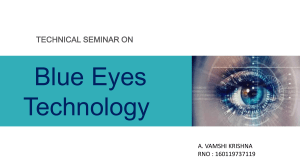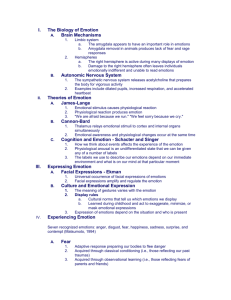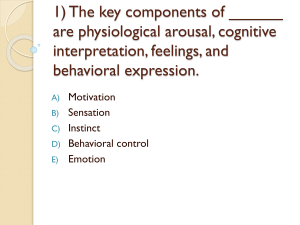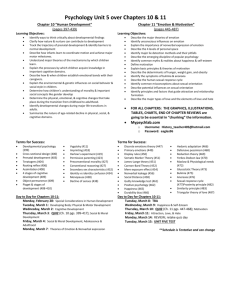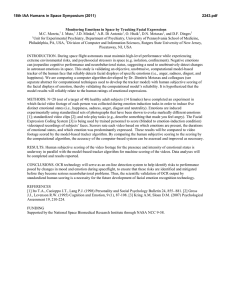Emotion
advertisement
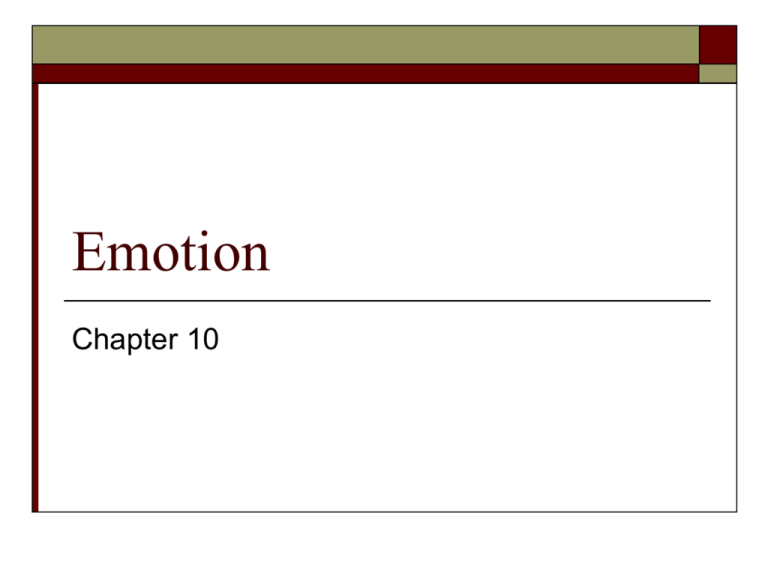
Emotion Chapter 10 Cognitive Component This component involves: a subjective conscious experience (cognitive) Cognitive appraisals help determine emotional experience Emotional experience contains an evaluative (e.g., good/bad) component Contrast effect Counterfactual thinking Winning the lottery Getting a promotion Positive psychology Physiological component Bodily arousal Much of this occurs through the autonomic nervous system Link between emotion and arousal is basis for polygraphy Neural Circuitry Key components Limbic System Hypothalamus Amygdala Adjacent Structures Real-world Application Fear is a basic primal emotion that is key to evolutionary survival. It's one we share with animals. Genetics plays a big role in the development of overwhelming -- and needless -- fear, psychologists say. But so do traumatic events. "Fear is a funny thing," said Ted Abel, a fear researcher at the University of Pennsylvania. "One needs enough of it, but not too much of it." About 40 million Americans suffer from anxiety disorders, according to the National Institute of Mental Health. A Harvard Medical School study estimated the annual cost to the U.S. economy in 1999 at roughly $42 billion. "There's a trick to panic attack," said David Carbonell, a Chicago psychologist specializing in treating anxiety disorders. "You're experiencing this powerful discomfort but you're getting tricked into treating it like danger. These days, thanks to counseling, self-study, calming exercises and introspection [one can] stop or at least minimize those attacks early on. Scientists figure they can improve that feardampening process by learning how fear runs through the brain and body. The amygdala isn't responsible for all of people's fear response, but it's like the burglar alarm that connects to everything else, said New York University psychology and neural science professor Elizabeth Phelps. Emory University psychiatry and psychology professor Michael Davis found that a certain chemical reaction in the amygdala is crucial in the way mice and people learn to overcome fear. When that reaction is deactivated in mice, they never learn to counter their fears. Scientists found D-cycloserine, a drug already used to fight hard-to-treat tuberculosis, strengthens that good chemical reaction in mice. Working in combination with therapy, it seems to do the same in people. It was first shown effective with people who have a fear of heights. It also worked in tests with other types of fear, and it's now being studied in survivors of the World Trade Center attacks and the Iraq war. Behavioral component Emotion involves: characteristic overt expressions (behavioral) Facial Feedback Hypothesis States that muscular feedback from facial expressions helps us to recognize our own emotions. Studies show that when asked to mimic facial expressions of various emotions, participants report experiencing those emotions to some degree. Culture and Emotion Similarities across cultures Recognition of facial expressions Use same evaluative dimensions Fair vs. not fair Triggered by same events Risky situations lead to fear Culture and Emotion Differences across cultures Emotional categorization Display rules Theories of Emotional Experience Evolutionary Theories of Emotion Emotions are innate reactions to stimuli Should be recognized without much cognitive effort (adaptive) Originate in subcortical brain structures that evolved before cortex Humans have a small number of fundamental emotions. Happiness Common sense notions incorrect People are generally happy Income, age, parenthood, intelligence, and attractiveness largely uncorrelated with happiness Physical health, good social relationships, religious faith, and culture modestly correlated with happiness Love, marriage, work satisfaction, and personality strongly correlated with happiness Subjective rather than objective reality important

